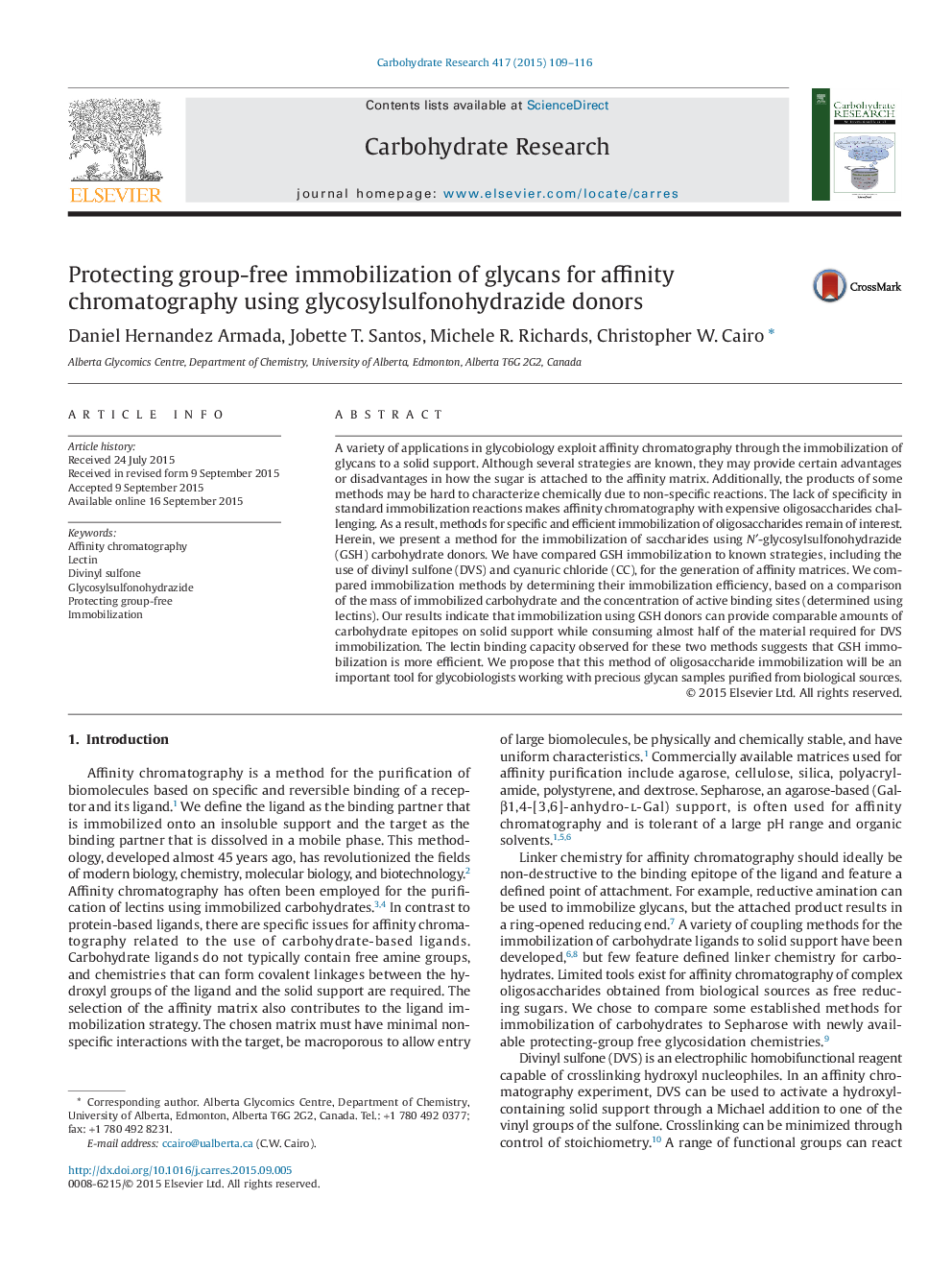| کد مقاله | کد نشریه | سال انتشار | مقاله انگلیسی | نسخه تمام متن |
|---|---|---|---|---|
| 1388235 | 1500834 | 2015 | 8 صفحه PDF | دانلود رایگان |
• Glycosylsulfonohydrazides were used for regioselective immobilization on Sepharose.
• GSH immobilization on Sepharose is more efficient than competing strategies.
• GSH-immobilized glycans are suitable for affinity chromatography of lectins.
A variety of applications in glycobiology exploit affinity chromatography through the immobilization of glycans to a solid support. Although several strategies are known, they may provide certain advantages or disadvantages in how the sugar is attached to the affinity matrix. Additionally, the products of some methods may be hard to characterize chemically due to non-specific reactions. The lack of specificity in standard immobilization reactions makes affinity chromatography with expensive oligosaccharides challenging. As a result, methods for specific and efficient immobilization of oligosaccharides remain of interest. Herein, we present a method for the immobilization of saccharides using N′-glycosylsulfonohydrazide (GSH) carbohydrate donors. We have compared GSH immobilization to known strategies, including the use of divinyl sulfone (DVS) and cyanuric chloride (CC), for the generation of affinity matrices. We compared immobilization methods by determining their immobilization efficiency, based on a comparison of the mass of immobilized carbohydrate and the concentration of active binding sites (determined using lectins). Our results indicate that immobilization using GSH donors can provide comparable amounts of carbohydrate epitopes on solid support while consuming almost half of the material required for DVS immobilization. The lectin binding capacity observed for these two methods suggests that GSH immobilization is more efficient. We propose that this method of oligosaccharide immobilization will be an important tool for glycobiologists working with precious glycan samples purified from biological sources.
Figure optionsDownload as PowerPoint slide
Journal: Carbohydrate Research - Volume 417, 19 November 2015, Pages 109–116
